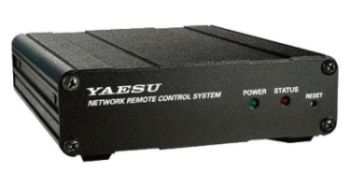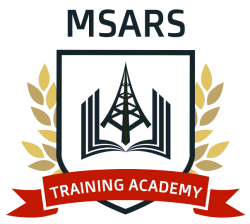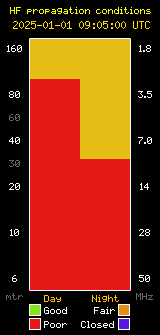News
- Details
- Written by: Maintenance Guy
- Category: News
- Hits: 414
 I just thought I'd provide an update on a number of things I've taken under my wing recently, so that all club members are kept informed.
I just thought I'd provide an update on a number of things I've taken under my wing recently, so that all club members are kept informed.
Firstly, the big news is that the club has formally adopted the WebSDR project, and so it's no longer a 'trial'. Until it can be installed in the club shack, it will however continue to be supported out of my own QTH on a 'best-efforts' basis. It will be powered-on for as many hours of the day as possible, and I've made some changes to help facilitate that. It's now running from a permanent direct power supply for the antenna pre-amplifier, as opposed to a USB port on my computer, which means users will be able to receive signals properly 24/7 and not just the 23/7 when my PC is being used! The antenna will continue to be disconnected though, when I'm transmitting on the main antenna - for example during some lunchtime nets and evening FT8 sessions.
On the KiwiSDR, I've recently installed a cheap Chinese mag-loop which some of you may be familiar with and which is generally referred to as an MLA-30+. This is a 500kHz - 30MHz active receive loop, and is a great performer for the price tag of thirty-odd quid.
I've had this on test for a couple of weeks, and it's very good, but it's not in a favourable location right now. At the moment, it's easily outperformed by my 80/40/20/15/10m End Fed Half Wave, but that should be addressed when it goes up on a new 12m Spiderpole at the weekend. This recent German infrastructure upgrade has further destabilised my marriage, but life is all about antennas Ken tells me. I hope he's right, because the children will miss their mother.
The small MLA-30+ amplifier box is excellent, but the 70cm Ø wire loop is woefully flimsy, and will be replaced with a 1m Ø sturdy aluminium tube loop, courtesy of G4UDU before it gets lofted up out of its current location. It will be very interesting to see how it performs then, but I have high hopes.
Back at the shack, work is progressing with installing an Ethernet cable from the main router directly into the shack. This is required for both the WebSDR and any future remotely-accessible shack radio. More news on this shortly.
Beyond that, we clearly need to agree on and then progress the shack antenna situation. That's not something I'm going to directly involve myself with (you may be relieved to hear) because there are far better qualified members at the club, but I have made my personal recommendation which is a Wellbrook loop for the WebSDR and the installation of Phil's excellent EFHW in place of the broken G5RV. What we do need to do, is get a decision made on this, and get it done before the weather changes. Let's not get bogged-down in complexity here. A radio club with no HF antennas is simply not credible.
Fundraising activities are already underway, and I am progressing one or two applications which are time critical, and have therefore been prioritised. More on this when I have details that I can share with you, but you should know that this is definitely happening and being actively pursued. An application will be submitted before the end of the Month.
Meanwhile, on the Training Academy front, I've hit a problem with database backups on the current MSARS platform which I'm trying to resolve with our hosting provider. If this proves to be insurmountable, I'll rebuild the whole academy on a new hosting platform so that I can get the development back on track. I'm keen to have the first course ready for trialling with our beta-testers within a few weeks.
Finally, Stella tells me that a new handbook will soon be available for new members, and maybe there is something I can contribute to that to help get it finished and uploaded to the Website.
All these things are happening at the club right now. Your opinions, help and support will be requested and appreciated at various points, and I'm hoping we can celebrate a new outlook for the club before too long.
Keep up to date here on the website, on Facebook, Twitter, YouTube and soon on Instagram too.
Berni M0XYF
- Details
- Written by: Maintenance Guy
- Category: News
- Hits: 448
 Excellent fun. So happy that everything worked out today. Not got it yet?
Excellent fun. So happy that everything worked out today. Not got it yet?
So, I made arrangements with Bob N4XAT beforehand, and had him install a piece of software on his Windows computer. Then he plugged in a computer microphone. That's it.
At this end in Burgess Hill, I created a login for N4XAT on a dedicated Yaesu hardware box that lives in my shack - on top of my Yaesu FTDX10.
When Bob starts the software on his computer in New Jersey, it logs him into my radio in Burgess Hill. The software he sees looks very similar to the front of my actual radio, and directly operates all its functions. Bob changes frequency, my radio changes frequency. No discernible 'lag'.
It has an on-screen PTT button, which when pressed, does exactly what it says on the tin.
Bob G/N4XAT, live and direct on the MSARS lunchtime net, using my radio and my antenna. Real radio. No phone patch, no Facebook Messenger, no Zoom, no intermediaries.
And when I say that, I'm not knocking what Dick has done in the past, because that was excellent, I'm just once again trying to demonstrate what we can have as a club in the near future.
So to make this clear, this is nothing to do with the WebSDR or any other SDR. This is completely separate. In a perfect world, the WebSDR would be somewhere other than the shack. Somewhere far away from any transmitter, and preferably from all QRM, but that's another quest, and I'm all quested-out right now.

This is the Yaesu equivalent of a FlexRadio system. Icom have a similar offering, though in my opinion it's probably the poor relation. Neither really stack up to the Flex offerings, but they do work in a similar way. Today's demonstration shows exactly what we need to get done in the shack and why. This is what's behind my fundraising efforts and why I keep banging on about all this stuff so much.
Totally wonderful to hear the joy in old friend's voices.
Thanks Bob if you're reading this, and I hope you found it fun. We'll definitely do this again, when both Bob and I are around to set it up (which is only really about our availability, and not the effort). I think we're going to be doing some more testing tomorrow (Wednesday) so jump on the 15m net if you want to say hi.
Berni M0XYF
- Details
- Written by: Maintenance Guy
- Category: News
- Hits: 386

Quick note to advise you all that Stella has now booked the Royal Oak pub in Barcombe for our annual skittles bash (literally) on Friday 30th September at 7:45pm.
Keep your diary free for that one, as it's probably one of our best social nights of the year, and in a beautiful setting.
- Details
- Written by: Maintenance Guy
- Category: News
- Hits: 500
 Today I get to tell you all about something I've been working on in the background for a few weeks now, and I'm extremely excited that this day has finally come.
Today I get to tell you all about something I've been working on in the background for a few weeks now, and I'm extremely excited that this day has finally come.
Mid Sussex Amateur Radio Society is going to get a full-blown professional online training academy.
Various parts of the jigsaw have been coming together in the last few days, and now I can start to imagine what it's going to look like and how it might work.
I make no apologies for thanking several people as part of this announcement, and I must start with the person who has made it possible, and that is Jon Hudson of SDRplay - a man known by some of you and by the wider amateur community as someone who has done so much to stimulate and support innovation and education in the field of radio communications.
Jon has very kindly given us access to a full training course, including all the individual educational elements required to deliver it. More detail will follow on exactly what it covers, but it's a modern course teaching modern radio practice and technology.
It's the first course that will be offered on a new MSARS platform, and I'll be rolling it out in stages - firstly to my ever helpful and willing friends Chris M7VJE and Merv M0WVE. They have volunteered to walk through the course as guinea-pig students to see how it teaches and how best to deliver and tailor it for the future.
The first part is down to me however, and that's the physical building of the new training environment. As part of that, I'm also very pleased to tell you that our web-hosting provider, an unsung and valuable friend to the society, has once again donated server resources to support an entirely new Learning Management System known as Moodle. Thank you sir.
Some of you may already be familiar with this system. It's widely used by schools and universities worldwide. It's a beast of a package and contains all the elements required to deliver first-class training programmes, though the learning curve for me is huge and it will take me some time to get to grips with it.
The LMS is already up and running on the MSARS webserver, and is being configured as we speak. This won't be a quick process however, and the phase after that will be the loading of the new course material - also a time consuming effort.
So a very sincere thanks to Chris and Merv for helping me out with finessing the course delivery side of things. It's no small undertaking, and I couldn't do this without their help. It'll be a lot of fun though, and we can run it in a flexible, bite-sized on-demand manner, as the course itself is an 11 week affair consisting of 11 one-hour 'lessons'.
Once everything has been properly bedded-in (and I suspect that this won't be until early 2023) I'm going to roll the programme out to a much wider audience.
That will involve me in actually teaching and supporting the course, though I'm hoping that some of you will be willing to help out with some ad-hoc student support on the in-built Moodle forums from time to time.
Once the platform itself is in place and tested, any course can be hosted on it. In the future, we can create introductory courses, RSGB-style courses and informal, lightweight one-hour courses on any topic - whatever we want. That's a lot of work, and probably enough to keep me busy for a couple of years, but I'm looking forward to the challenge.
Berni M0XYF
- Details
- Written by: Maintenance Guy
- Category: News
- Hits: 1074
![]() Phil G4UDU this morning posted a link to a tremendously useful Web resource called sigidwiki.com.
Phil G4UDU this morning posted a link to a tremendously useful Web resource called sigidwiki.com.
Translated back into English from Nerdish, this is a radio signal identification Wiki, something I'm sure all of us would potentially be interested in. We know that a Wiki is an online information resource built and maintained by its own user base, and so it's usually up to date and accurate because the curators are often passionate if not fanatical about managing certain information for the wider community.
This particular site is clearly dedicated to identifying radio signals of all types, and the Wiki is well organised by both frequency range and usage type.
I'll let you go and have a play with it, but it really doesn't take very long to (for example) identify the horrible Russian Over The Horizon radar signals currently splattering roughshod over not just our amateur bands, but all HF frequency ranges, without regard for any other spectrum users.
Usefully, you get to see a sample of what the signals look like on your spectrum waterfall, and also hear an audio sample. The audio is surprisingly helpful in differentiating similar-looking signals, often highlighting differences that are not immediately visually discernible.
Here you can see the entry for the 29B6 Russian 'Kontayner' radar:
https://www.sigidwiki.com/wiki/29B6_%27Kontayner%27_OTH_Radar
which looks quite similar to the UK's very own PLUTO II OTH radar (based in Cyprus):
https://www.sigidwiki.com/wiki/PLUTO_II_OTH_Radar
but you can clearly hear the difference. For political balance, it has to be said that it doesn't take much to find an awful lot of PLUTO II activity up and down the bands at the moment either, for obvious reasons I guess.
Military radar aside, there is an amazing collection of signal data in this database, so next time you see something unusual on the bands, why not screen grab it and go and look it up. It's particularly good at resolving digital signal types.
Berni M0XYF





